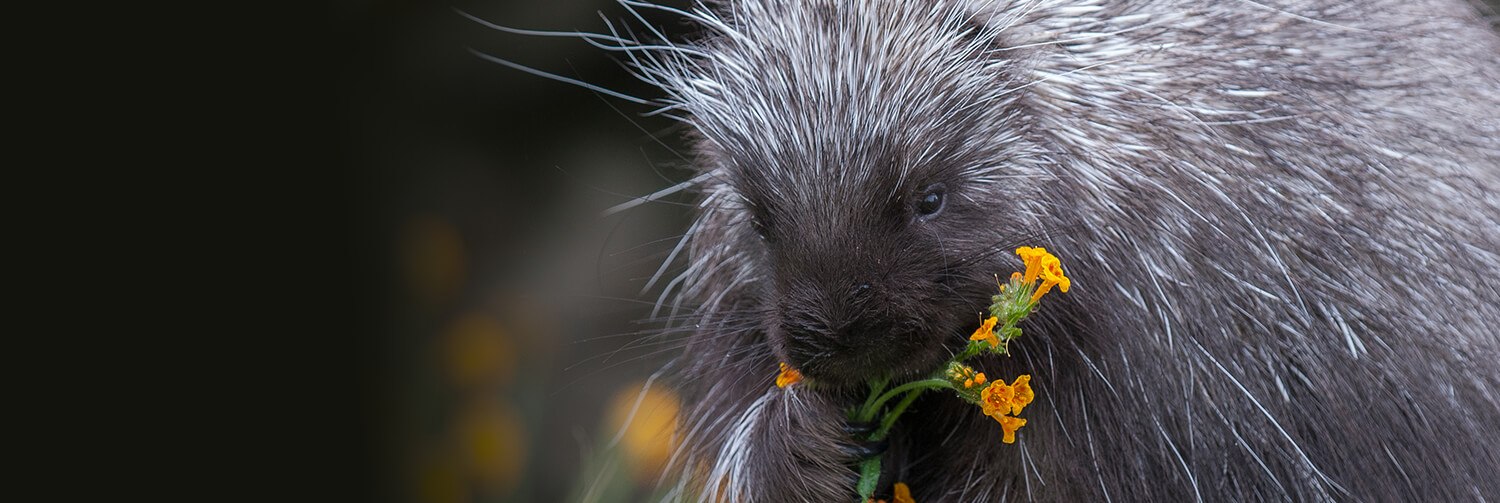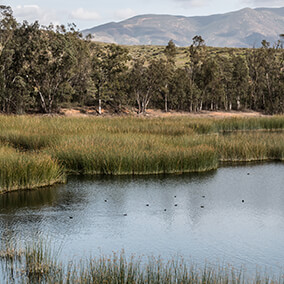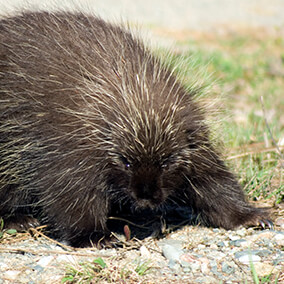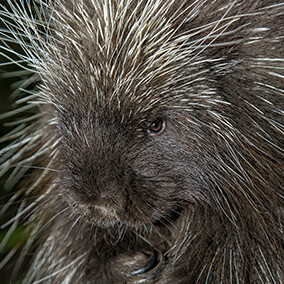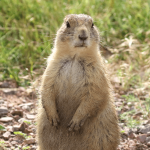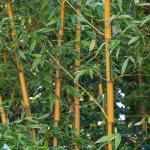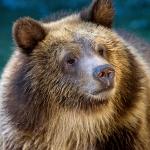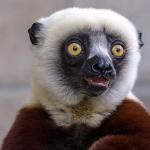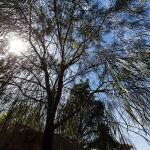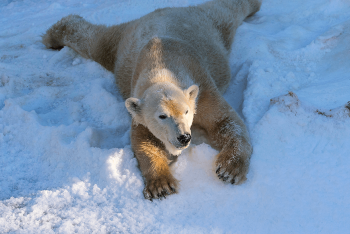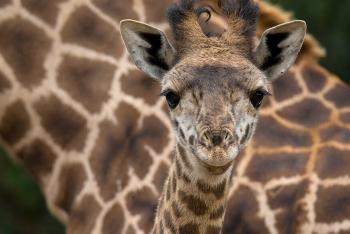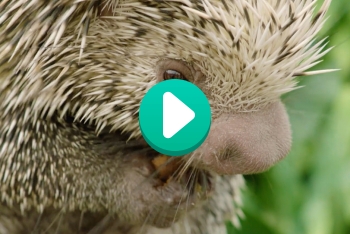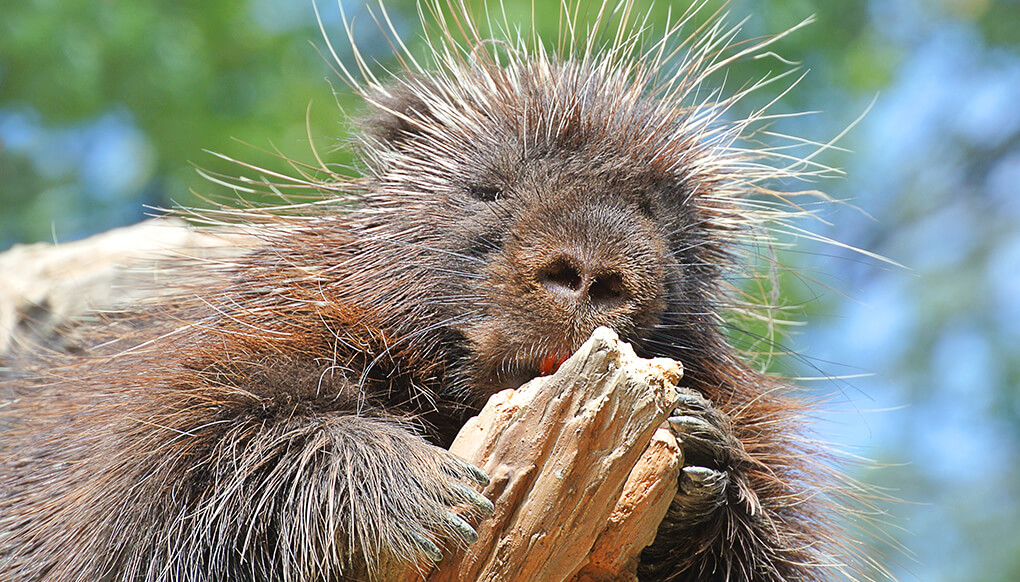
North American porcupine
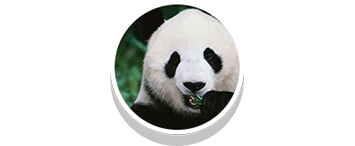
Mammals
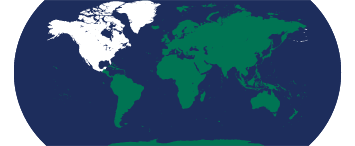

Stable
facts

Porcupines also eat pine needles, berries, seeds, flowers, and water plants.

description
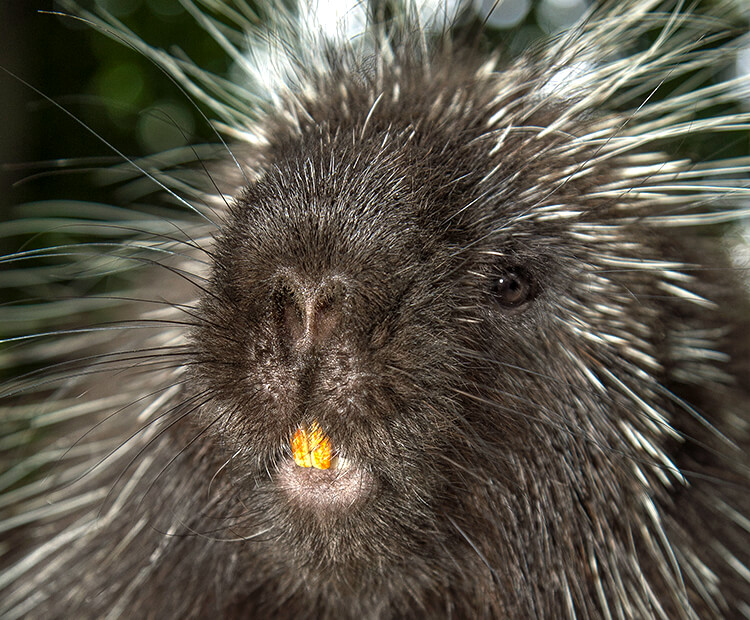
description
Toothy tool
Porcupines are a type of rodent, and their incisors prove it! A porcupine uses its large two front teeth for gnawing off bites of food. The incisors continue to grow throughout the porcupine's life, and the constant gnawing keeps them worn down to the perfect size.
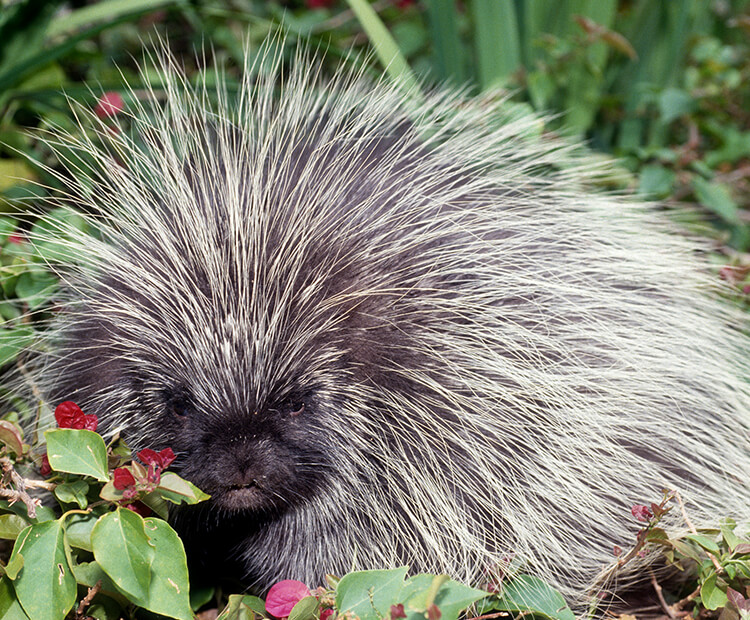
Sharp defense
The 30,000 quills that cover a North American porcupine's body are its best defense—but not the way you may think! A common myth is that porcupines can "shoot" their quills at a predator; but they can't. Here's the truth: the quills are made of keratin like your hair and fingernails. And just like your hair, old quills fall out as new ones grown in. The shed quills often get trapped in the fur around them, and when a porcupine shakes, the quills fall out. Also, the spines are loosely attached to the skin. When they come in contact with something else, they are easily detached.
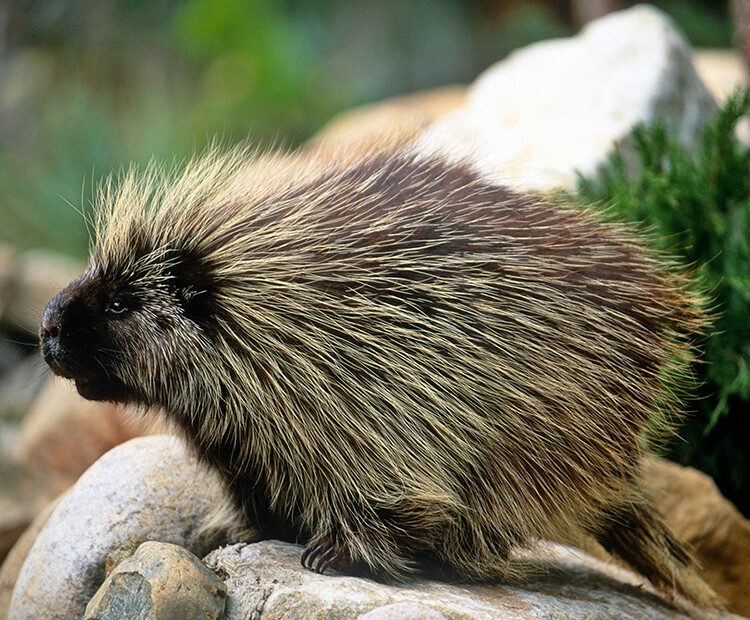
Points of interest
Sometimes it's hard to see the quills on a North American porcupine, because they are hidden by long, soft guard hairs. But if a porcupine feels threatened, it makes the prickly parts easy to see. Muscles at the base of each spine contract and make the quill stand upright. When all the quills are erect, it makes the animal look very large and dangerous! The spiny tail can also be used like a club, lashing it back and forth. This makes the quills rattle, adding a warning sound to the animal's display.
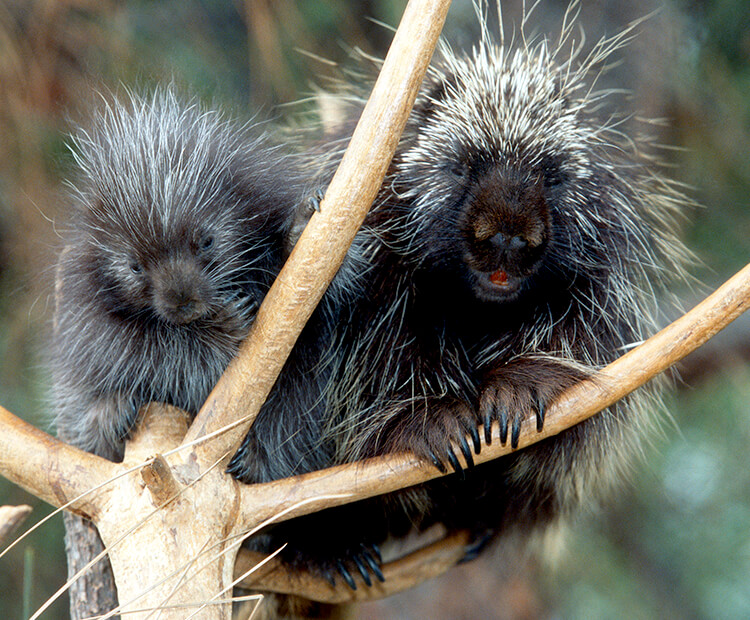
Soft start
Baby porcupines are called porcupettes. Females usually have only one baby at a time. The porcupette's quills are soft and flexible at birth, but harden after a few days. Then the little one waddles after its mother and learns to find food. After just a few months, the porcupette can take care of itself and goes its own way.

